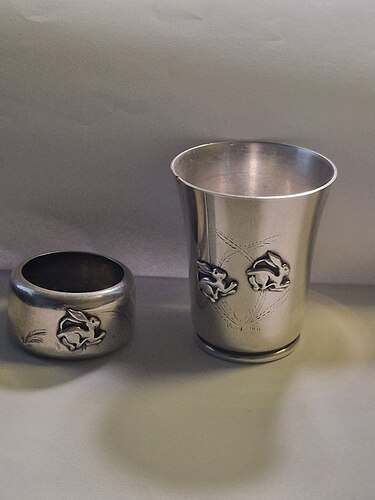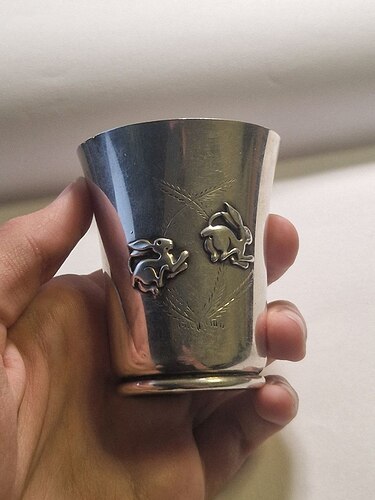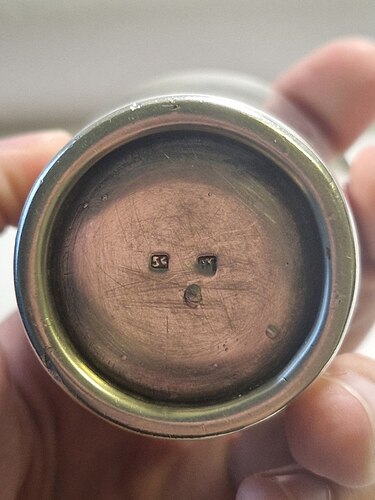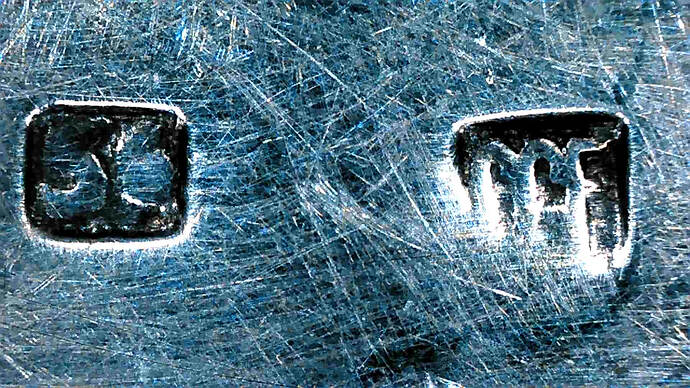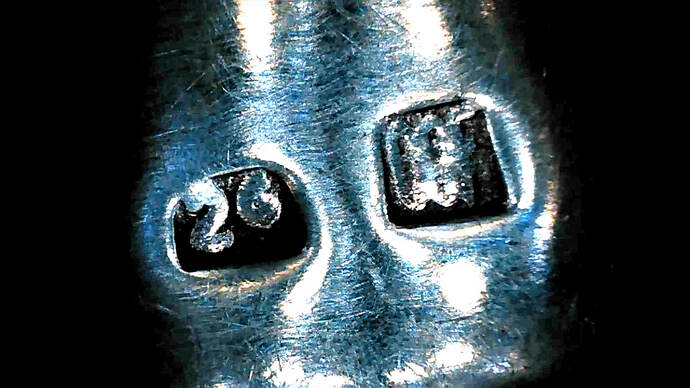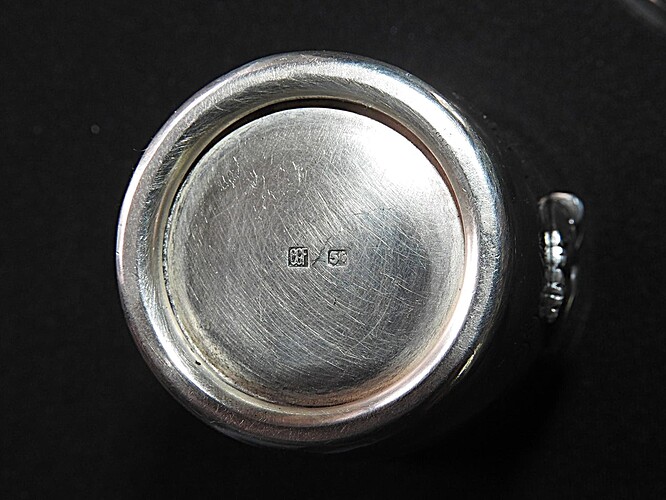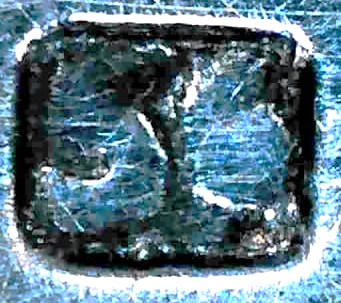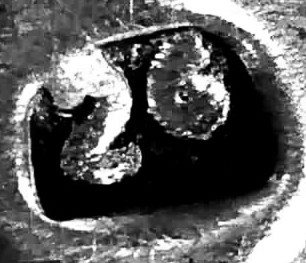Hi, I bought this set a couple of days ago. As I understand, it’s a cup and a napkin ring. I’m not quite sure whether it’s silver or silver-plated — the hallmarks look different on the two items. I’ve attached photos of the pieces and their hallmarks taken under a microscope. I also don’t know the period or country of origin, so I’d really appreciate any help identifying that as well.
Silversmith CGF, Lyon, France.
Pot porte gobelet métal argenté CGF-3poinçons-décor papillon au travers-très bon état-1960-70 - Décoration
timbale, gobelet en métal argenté, décoré d’un faon, Bambi, orfèvre CGF 5G | eBay
Tasse ou Timbale à Anse en Métal Argenté - Poinçon CGF - Décor Lapins - Vintage | eBay
NUMBERS IN FRENCH SILVERPLATE
The meaning of numbers in French silverplate marks has changed over time:
1797 - c. 1860
number accompanied by “E”, “M” or “EM” (meaning Dixiéme / tenth) in the upper right corner. This number is the percentage of silver used to plate the copper ingot (plating was made using the system known in the UK as “Old Sheffield Plate”)
c. 1860 - 1983
number alone or accompanied by “G” or “GR”. This is the number of grams of silver used to plate a single item or a dozen of spoons or forks (referred to the process of silver electroplating which has supplanted the OSP system)
after 1983
“Roman” numbers I or II in a corner. This number identifies the first or second quality of “métal argenté”. The quality of the plating is determined by the microns of silver present on the item (a micron is one thousandth of a millimeter or 0.001mm).
2G
